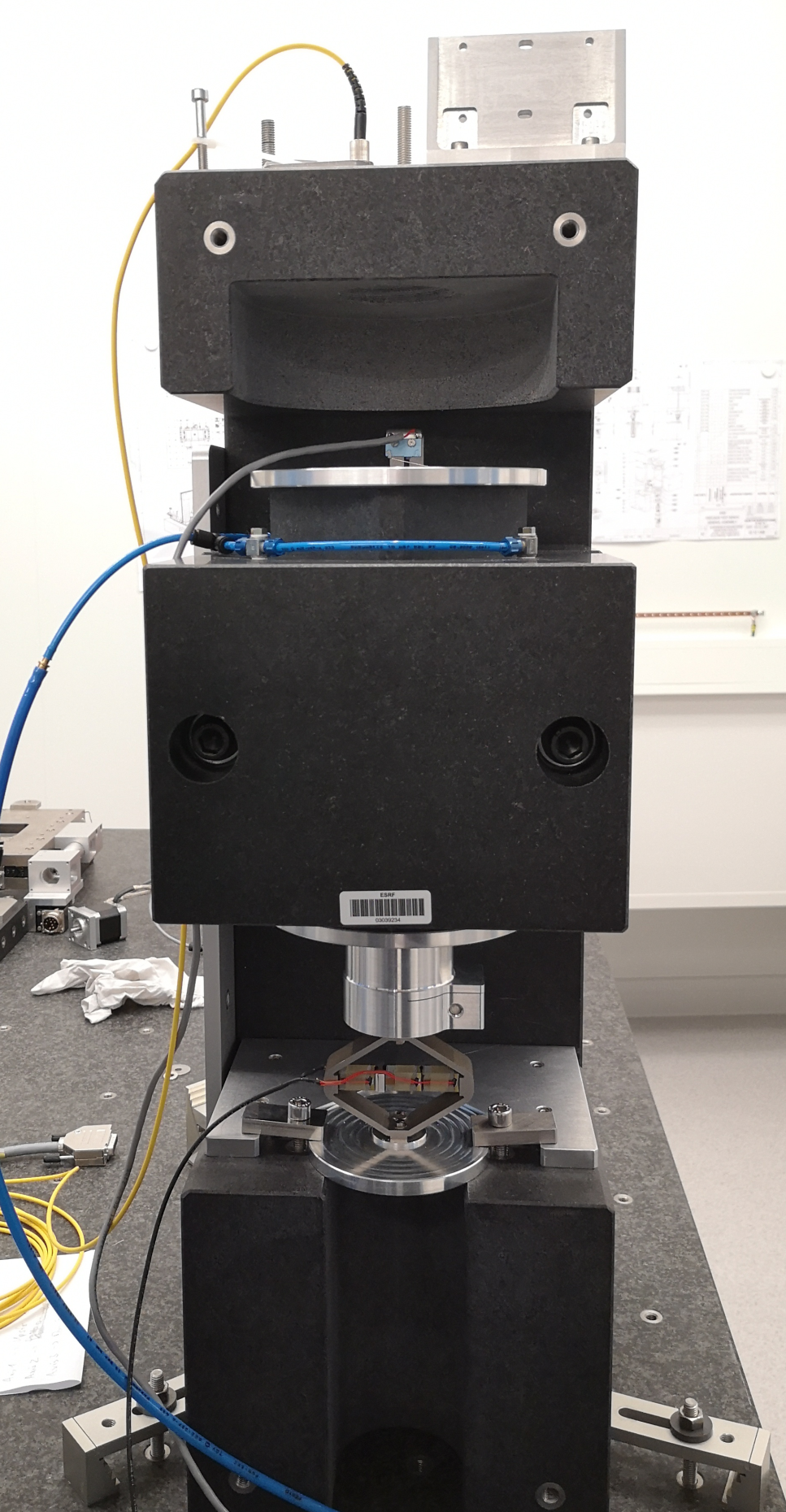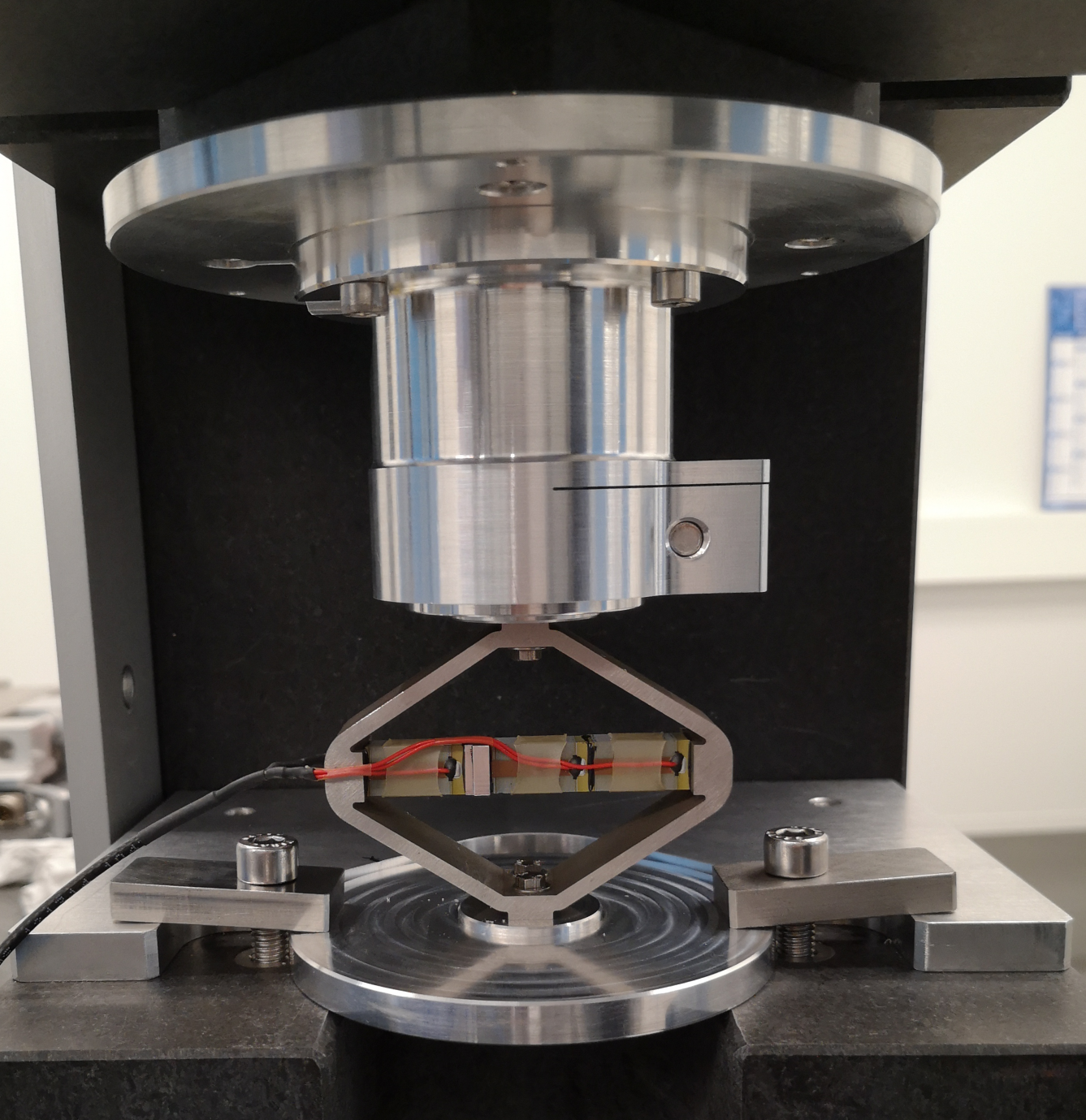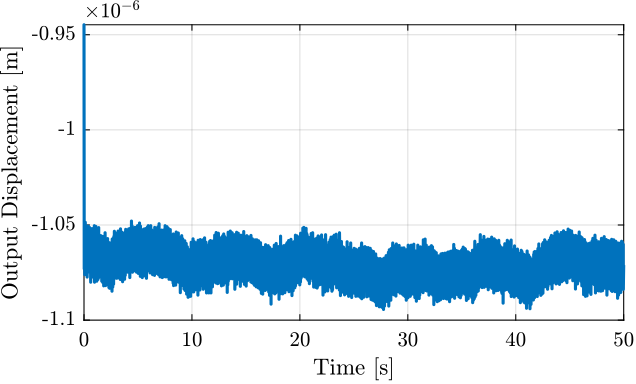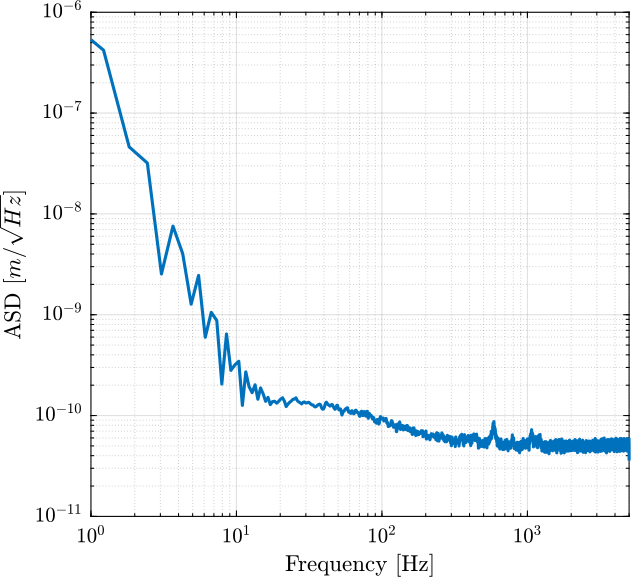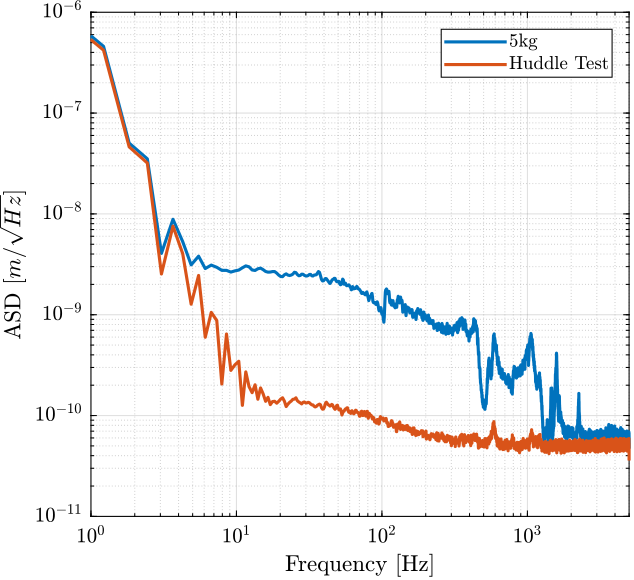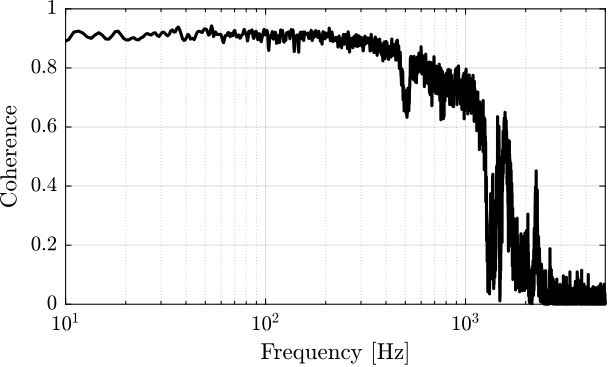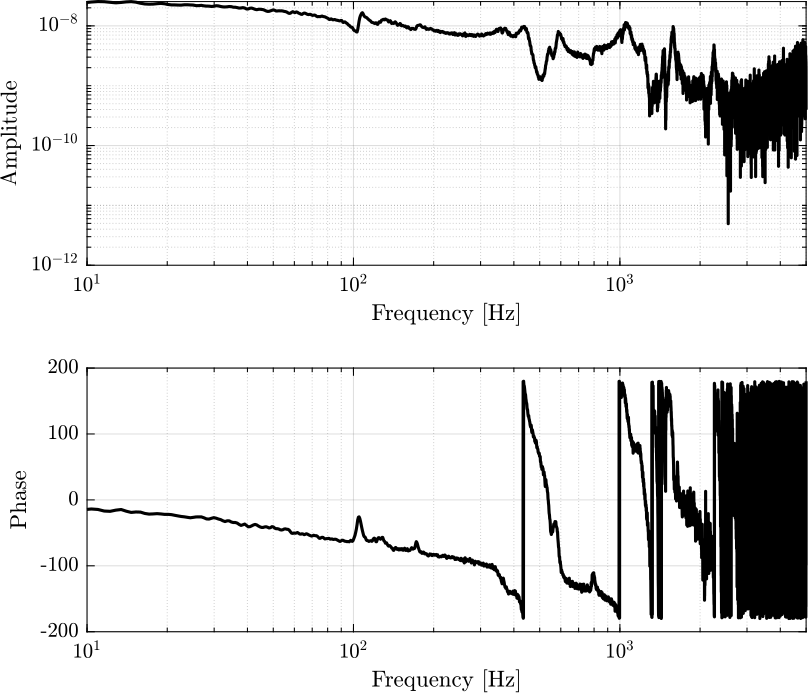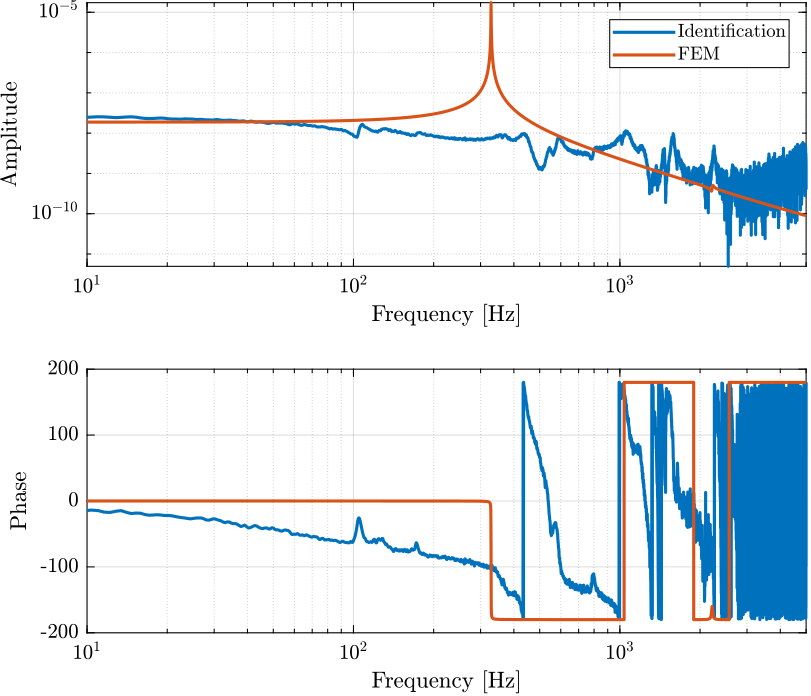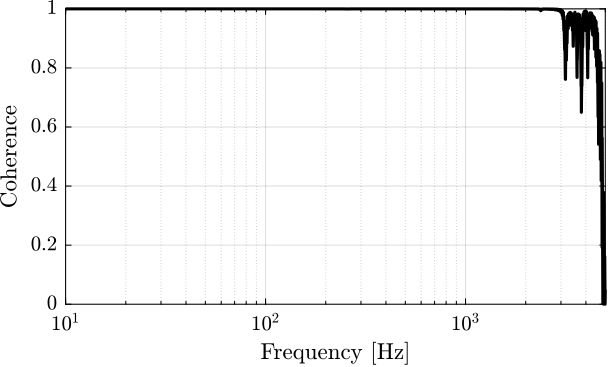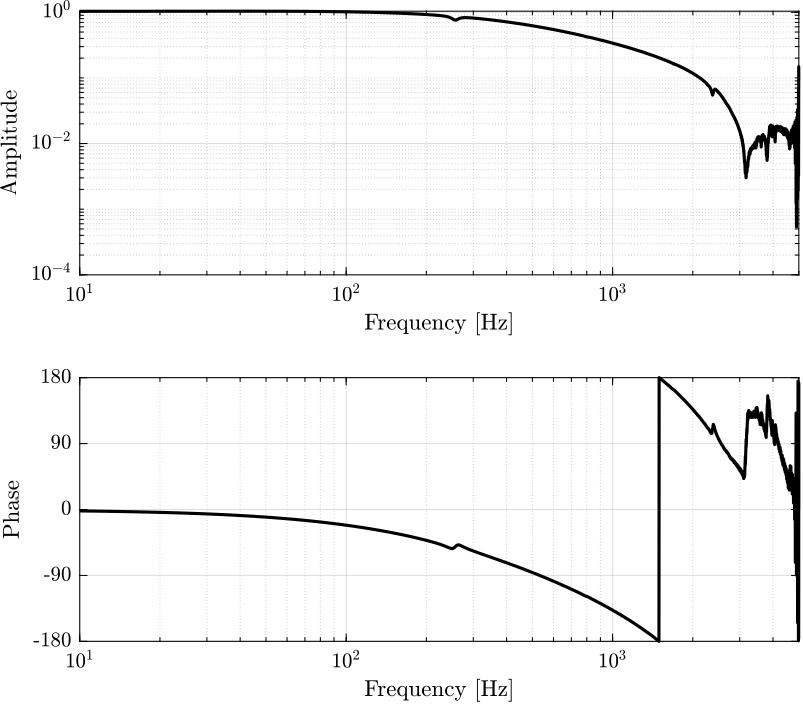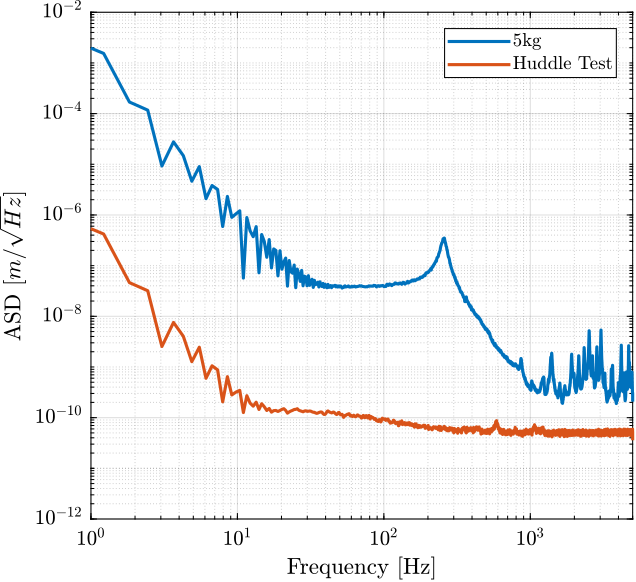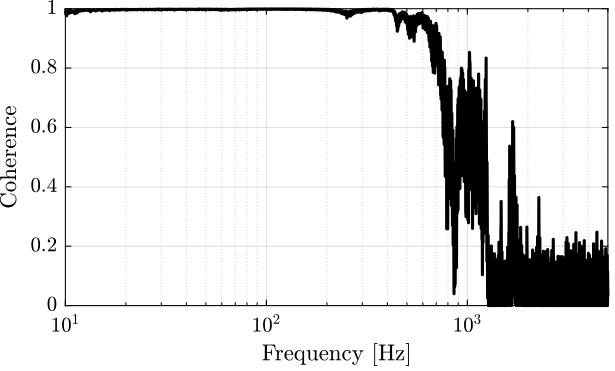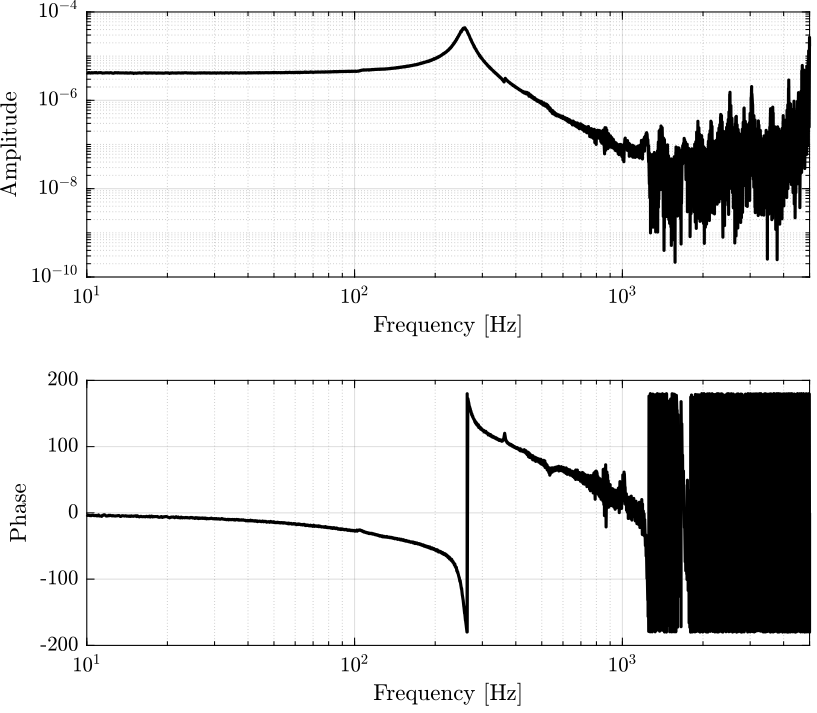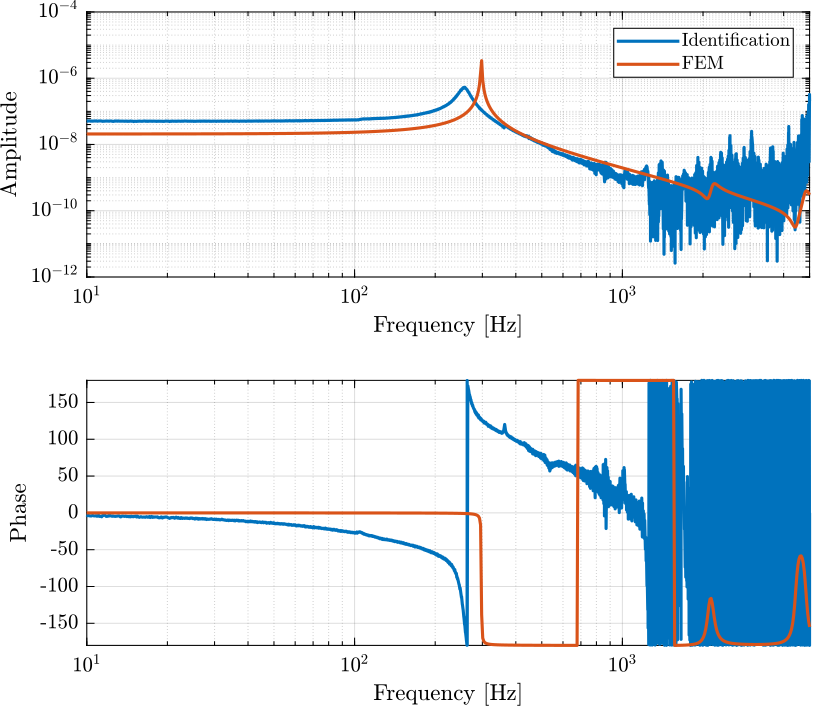16 KiB
16 KiB
Test Bench APA95ML
- Introduction
- Setup
- Run Experiment and Save Data
- Huddle Test
- Transfer Function Estimation with $m=5kg$
- Transfer function of the PI Amplifier
- PI Amplifier
Setup
Parameters
Ts = 1e-4;Filter White Noise
Glpf = 1/(1 + s/2/pi/500);
Gz = c2d(Glpf, Ts, 'tustin');Run Experiment and Save Data
Load Data
data = SimulinkRealTime.utils.getFileScopeData('data/apa95ml.dat').data;Save Data
u = data(:, 1); % Input Voltage [V]
y = data(:, 2); % Output Displacement [m]
t = data(:, 3); % Time [s] save('./mat/huddle_test.mat', 't', 'u', 'y', 'Glpf');Huddle Test
Transfer Function Estimation with $m=5kg$
Comparison of the PSD with Huddle Test
Compute TF estimate and Coherence
Comparison with the FEM model
Conclusion ignore
The problem comes from the fact that the piezo is driven directly by the DAC that cannot deliver enought current. In the next section, a current amplifier is used.
Transfer function of the PI Amplifier
Compute TF estimate and Coherence
Ts = t(end)/(length(t)-1);
Fs = 1/Ts;The coherence and the transfer function are estimate from the voltage input of the PI amplifier to its voltage inputs.
The coherence is very good as expected (Figure fig:PI_E505_coh).
The transfer function show a low pass filter behavior with a lot of phase drop (Figure fig:PI_E505_tf).
win = hann(ceil(10/Ts));
[tf_est, f] = tfestimate(u, um, win, [], [], 1/Ts);
[co_est, ~] = mscohere( u, um, win, [], [], 1/Ts);The delay can be estimated as follow:
finddelay(u, um)*Ts0.0004
